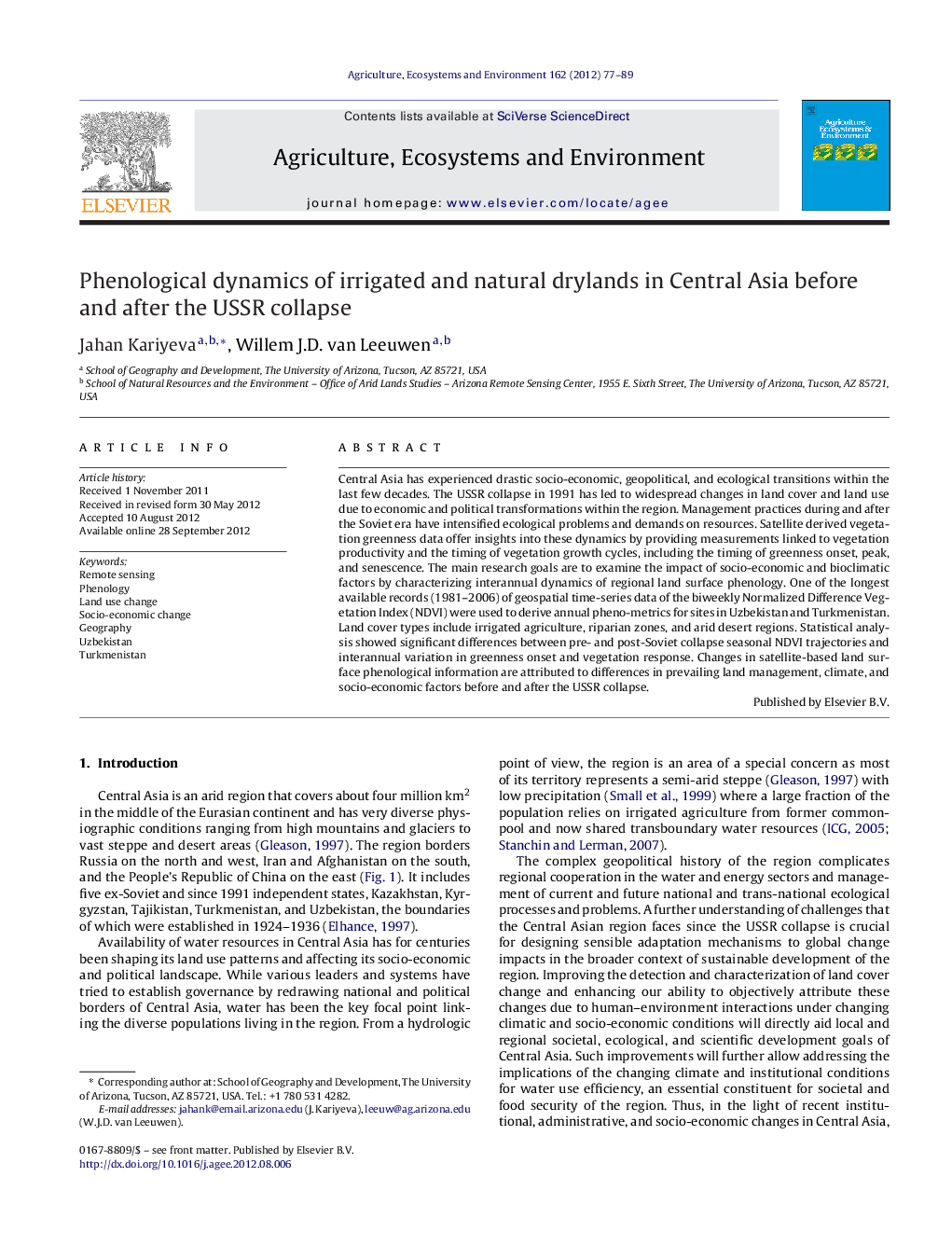| کد مقاله | کد نشریه | سال انتشار | مقاله انگلیسی | نسخه تمام متن |
|---|---|---|---|---|
| 2414387 | 1552090 | 2012 | 13 صفحه PDF | دانلود رایگان |

Central Asia has experienced drastic socio-economic, geopolitical, and ecological transitions within the last few decades. The USSR collapse in 1991 has led to widespread changes in land cover and land use due to economic and political transformations within the region. Management practices during and after the Soviet era have intensified ecological problems and demands on resources. Satellite derived vegetation greenness data offer insights into these dynamics by providing measurements linked to vegetation productivity and the timing of vegetation growth cycles, including the timing of greenness onset, peak, and senescence. The main research goals are to examine the impact of socio-economic and bioclimatic factors by characterizing interannual dynamics of regional land surface phenology. One of the longest available records (1981–2006) of geospatial time-series data of the biweekly Normalized Difference Vegetation Index (NDVI) were used to derive annual pheno-metrics for sites in Uzbekistan and Turkmenistan. Land cover types include irrigated agriculture, riparian zones, and arid desert regions. Statistical analysis showed significant differences between pre- and post-Soviet collapse seasonal NDVI trajectories and interannual variation in greenness onset and vegetation response. Changes in satellite-based land surface phenological information are attributed to differences in prevailing land management, climate, and socio-economic factors before and after the USSR collapse.
► Institutional and land use changes can be detected with satellite time series data.
► Variation in vegetation phenology was significant with institutional regime change.
► Change in land surface phenology revealed differences in crop cultivation practices.
► ENSO phases and annual vegetation productivity show correspondence in case studies.
► Vegetation index values increases/decreases with warm/cold ENSO phases respectively.
Journal: Agriculture, Ecosystems & Environment - Volume 162, 1 November 2012, Pages 77–89